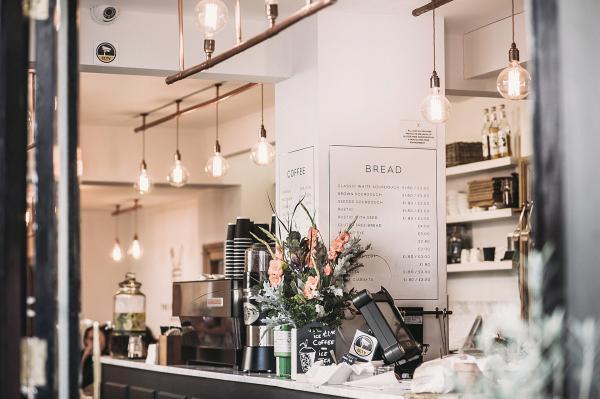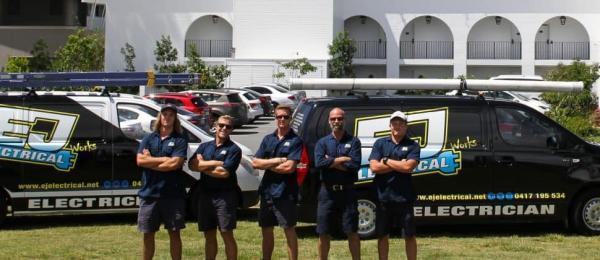“I’m Concerned about the Increase in Over-Illumination,” says Gold Coast Electrician, EJ Barnes, owner of EJ Electrical Works
EJ Barnes, a Gold Coast Electrician and owner of EJ Electrical Works, points out that when it comes to lighting, too much of a good thing can be bad for us. Find out why.
"I'm Concerned about the Increase in Over-Illumination," says Gold Coast Electrician
With LED lighting cutting energy costs there’s a renewed movement towards illuminating just about everything from trees to buildings - and in spaces where light is needed, we may be going altogether too bright. EJ Barnes, a Gold Coast Electrician and owner of EJ Electrical Works, points out that when it comes to lighting, too much of a good thing can be bad for us.
The Many Facets of Over-Illumination
Over-illumination is a term that describes a variety of situations in which there is more light than we really need. It can refer to very high artificial light intensities, or it can refer to unnecessary lighting such as leaving an unoccupied office illuminated all night.
But these days we’re recognising the need to vary light intensity depending on what we’re doing instead of opting for the brightest possible light all the time, the need to experience softer light later in the day, and our inbuilt preference for natural light.
Barnes says this extends the definition of over-illumination to include too few controls to vary light intensity, not making the most of natural light during the day, and possibly, using the wrong light spectrums in artificially lit spaces.
Why We Should Think About Over-Illumination
Barnes says we’ve only lately become aware of the ways in which lighting influences us on a biological level. “It’s not just eye-strain,” he explains, “it’s headaches, migraines, stress, and fatigue.”
There’s also the question of utility. Barnes agrees that illuminating landmark architectural features, for example, helps to give a city its character, but he feels that we need to be cautious about what we illuminate.
“Personally, I feel that illuminating the outside of a building is fine if it’s a building that’s important to a lot of people or if it’s minimalistic lighting that just helps people to find their way home in the dark. But we need to think about utility. There’s a cost and an environmental impact to lighting despite recent energy-saving options.”
As for lighting areas that are both unoccupied and unseen from the outside, Barnes recommends a rethink. Security cameras can see in the dark these days, so why bother? Just turning off unnecessary lights can save businesses a lot of money in the long run.
Bright Light in Retail Spaces
These days, we seem to love extremely bright light. But Barnes isn’t sure it’s good for us in the long run. Retail spaces are increasingly going for light far above the average foot-candle (fc) level of 30-40 recommended for office work. “It probably isn't comfortable for their clients, but it certainly isn’t good for their staff,” remarks Barnes.
He understands why retailers love all that bright light. They literally shine out. But he recommends focussing the brightest light on featured display areas rather than regular shopping spaces and work areas. His logic is that you’ll get more visual impact from your planned displays and marketing materials that way.
Gold Coast Electrician Advocates People-Centric Illumination
When choices need to be made, Barnes recommends that we look to people first. What people do in different settings serves as the logical guide to how they should be lit. “You shouldn’t illuminate a feature planting in a parking lot if you haven’t illuminated the walkway first - and it’s worth considering whether lighting up the feature planting has any value to speak of even if the walkways are already well-lit.
As for extremely bright retail space illumination, that might be counter-productive. Research shows that shoppers are most comfortable in moderate light with a warm temperature. The very bright, white lighting designs we’re seeing in some outlets could even be putting clients off.
Perfect Practicality Matches with Perfect Aesthetics
Over-illumination is wasteful and, very often, counterproductive, Barnes concludes. “We need to make lighting decisions around the people who use spaces. That might sometimes include lighting that’s there for purely aesthetic reasons, but its impact will have been carefully considered as part of an engineered experience.”
“It makes sense that lighting that’s been designed with restraint and an eye for practicality also reflects good taste. It’s also important that we should begin to see light as a customisable feature. For now, we can look at individualising workspaces so that people can adjust lighting according to tasks and preferences. In the future, we may be able to adjust lighting automatically, for example, in response to what shoppers are doing in a store.”
The key, says Barnes is practicality. Form follows function and the result is good aesthetics. It doesn’t have to be complicated, but it can be effective. If you’d like to find out how EJ Electrical Works can help you with office or retail space lighting design, visit EJ Electrical Works website or call 1300-DIAL-EJ, that’s 1300 342 535.
Syndicated by Baxton Media.



